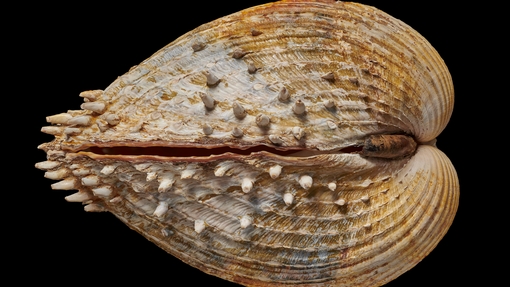Conference Reveals Welsh Naturalist’s Major Contributions to London’s Natural History Museum
An upcoming conference in London explores the scientific legacy of Thomas Pennant (1726–1798) from Holywell, Flintshire - an internationally renowned naturalist whose specimens form a core part of the Natural History Museum’s collections.

The upcoming ‘Curious Collections’ conference at the Natural History Museum, London (November 7th) will shed new light on one of the oldest collections in the museum’s archives, gathered in the eighteenth century by the Welsh naturalist and travel writer Thomas Pennant, and donated to the Museum in 1912. Including fossilised coal, a bear’s jaw, and the tooth of a prehistoric shark, these fascinating items will be discussed by a range of experts in natural history, nature writing, travel literature, museum curation, and the digital humanities, demonstrating the rich history and high-tech future of these enlightenment-era specimens.
The conference will provide attendees with the opportunity to view some of Pennant’s specimens with their curators, to see examples of his published volumes in the museum’s library and archives, and to hear scientists, historians, literary scholars, and experts in digital research methods discuss new ways in which this material can be presented to academics and the wider public.
Organised by the Curious Travellers 2 project, a collaboration between the Natural History Museum, the University of Glasgow, and the University of Wales Centre for Advanced Welsh and Celtic Studies, this conference builds on the project’s ongoing work editing a new, open access, online edition of Pennant’s tours in Wales and Scotland, funded by a grant from the Arts and Humanities Research Council. These tours, often credited with originating modern tourism in Britain’s Celtic countries, combine Pennant’s research into natural history with details about folklore, antiquities, and contemporary society, providing detailed and multilayered tourist’s eye views of eighteenth-century Britain.
Principal Investigator Prof. Mary-Ann Constantine said:
“Uncovering the stories behind Thomas Pennant’s specimen collections at the Natural History Museum is proving a real adventure. It’s a delight to be working with such an extraordinary range of individuals - all of them bringing their knowledge and enthusiasm to the table. This is a great example of genuine, dynamic collaboration across disciplines and institutions.”
Notes for Editors
Contact: Dr Angharad Elias (Admin Officer) a.elias@wales.ac.uk
1. The Centre for Advanced Welsh and Celtic Studies (CAWCS) was established by the University of Wales in 1985 as a dedicated research centre conducting team-based projects on the languages, literatures, culture and history of Wales and the other Celtic countries. It is located in Aberystwyth, adjacent to the National Library of Wales, which is an internationally-renowned copyright library with excellent research facilities.
2. CAWCS offers unique opportunities for postgraduate students to work alongside specialists in a dynamic and supportive environment. We welcome enquiries about MPhil/PhD topics in any of our research areas. For more information about research opportunities, or for an informal chat about possible topics, contact our Head of Graduate Studies, Dr Elizabeth Edwards: e.edwards@wales.ac.uk
3. CAWCS is the home of the Dictionary of the Welsh Language, which is celebrated its centenary in 2021: https://www.welsh-dictionary.ac.uk/
Further Information
Arwel Lloyd
Principal PR and Communications Officer
Corporate Communications and PR
Email: arwel.lloyd@uwtsd.ac.uk
Phone: 07384 467076
